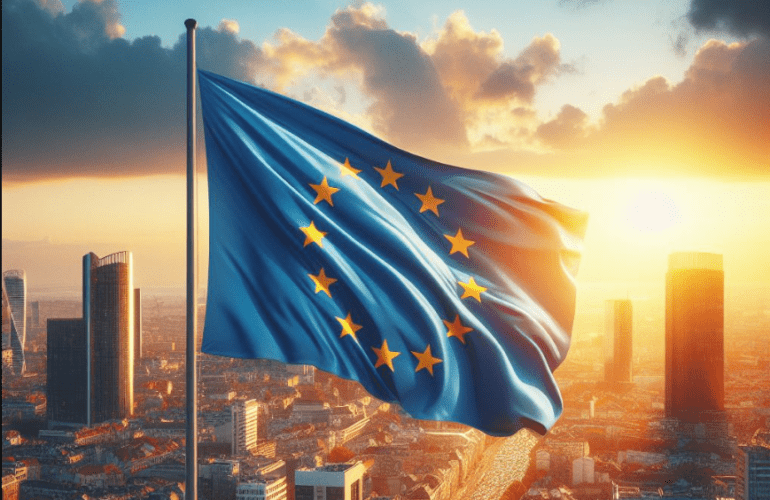TL;DR:
- European Union’s AI Act successfully passes the final hurdle for adoption.
- The political agreement reached in December paved the way for the final text’s confirmation.
- The regulation outlines prohibited uses of AI and governance rules for high-risk applications.
- Transparency requirements will be applied to AI chatbots, while low-risk AI applications are excluded.
- Ongoing opposition, led by France, posed a potential threat to the regulation but was ultimately overcome.
- The Act now proceeds to the European Parliament for adoption and is expected to become law in the coming months.
- Implementation will occur in phases, with foundational models subject to rules starting in 2025.
- The European Commission is establishing an AI Office to oversee compliance with systemic risk models.
Main AI News:
In a momentous development, the European Union’s AI Act has successfully navigated its final major obstacle on the path to adoption. Member State representatives have cast their votes, affirming the conclusive text of the draft law. This achievement comes on the heels of a significant political agreement reached in December, following arduous negotiations among EU co-legislators. The subsequent painstaking work of transforming agreed-upon positions into a final compromise text culminated in today’s Coreper vote, securing the draft rules.
This planned regulation delineates a catalog of forbidden AI applications, highlighting what is considered “unacceptable risk,” such as the use of AI for social scoring. Furthermore, it introduces governance guidelines for high-risk AI implementations, where the technology could potentially jeopardize health, safety, fundamental rights, the environment, democracy, and the rule of law. It also extends transparency requirements to applications like AI chatbots. However, it’s important to note that ‘low-risk’ AI applications fall outside the scope of this law.
This resounding endorsement of the final text heralds a collective sigh of relief across Brussels. Persistent opposition to the risk-based AI regulation, primarily led by France, aimed at avoiding legal constraints that could hinder the rapid growth of domestic generative AI startups, had cast doubts on the legislation’s fate, even at this advanced stage. Thankfully, all 27 ambassadors of EU Member States unanimously threw their support behind the text.
Had this crucial vote failed, the entire regulation could have been in jeopardy, with limited time for renegotiations, given the upcoming European elections and the current Commission’s mandate nearing its end later this year.
The baton now passes back to the European Parliament for the adoption of the draft law. Lawmakers in committee and plenary sessions will also have a final say on the compromise text. However, the opposition mainly emanated from a handful of Member States, notably Germany and Italy, with concerns regarding obligations imposed on so-called foundation models. Therefore, the upcoming votes appear to be a formality, and the EU’s flagship AI Act is expected to become law in the coming months.
Once adopted, the Act will come into force 20 days after its publication in the EU’s Official Journal. A tiered implementation period will follow, with six months of grace before a list of banned AI applications, as outlined in the regulation, begins to take effect (likely around the fall). Rules pertaining to foundational models (general-purpose AIs) will only apply starting in 2025, allowing a year for preparation. The bulk of the remaining rules won’t come into effect until two years after the law’s publication.
The Commission is already taking steps to establish an AI Office tasked with overseeing the compliance of a subset of powerful foundational models deemed to pose systemic risk. Additionally, a recent announcement outlined measures aimed at bolstering the prospects of homegrown AI developers, including the reconfiguration of the bloc’s supercomputer network to support generative AI model training. With this, the European Union solidifies its position at the forefront of AI regulation and development.
Conclusion:
The EU’s successful passage of the AI Act signals a crucial step towards clear and comprehensive regulation of artificial intelligence applications. This development provides much-needed clarity for businesses operating within the EU market, ensuring that they adhere to defined rules and transparency requirements. With this regulatory framework in place, the EU is positioning itself as a leader in AI governance, creating a stable environment that fosters innovation while addressing potential risks. This is likely to attract investment and further development in the AI sector, bolstering the EU’s competitive edge in the global market.

